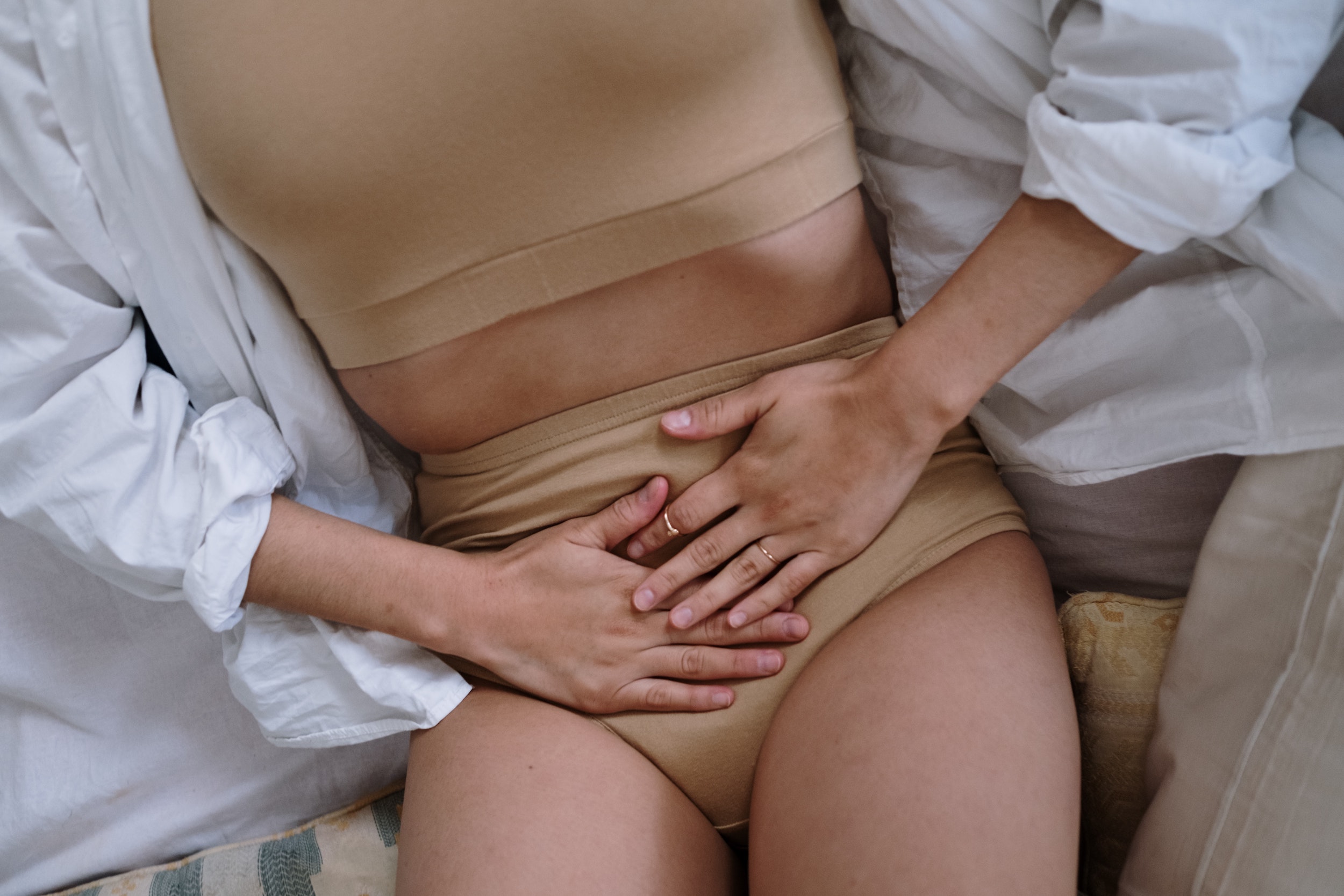Recipes to help combat period pains
When it’s that time of the month, cravings can creep in, emotions can surge, and the stomach cramps hurt like crazy.
That’s why we’ve teamed up with our friends at Kin Fertility to help you make the right food choices to help ease the cramps and find some more relief outside the usual combo of painkillers and a hot water bottle.
Now, when you look at the ingredients, they may not all be foods that you’d typically crave on your period, BUT we’ve pulled together our favourite KIC recipes and we’re pretty confident that you’ll be drooling by the time you’ve stopped scrolling through this blog!
Dark chocolate
Okay, this one you’ll no doubt be craving! Rich in both magnesium and iron — it’s great for replenishing your natural stores of these vitamins which can dip during your period.
Studies have shown that magnesium reduces the severity of PMS symptoms.
What’s more, people who have magnesium deficiencies are more likely to suffer severe PMS symptoms.
The KIC recipe hub has some seriously yummy recipes featuring dark chocolate that you could whip up and to help combat the period munchies. Our personal faves are the:
-
- Choc Coated Rice Cakes,
- Choc Banana Oat Bars
- OG Chunky Chocolate Chip Peanut Butter Cookies
Leafy green vegetables
With reduced iron levels during your period, it’s important to up your intake of iron-rich foods. In fact, a dose of leafy green veggies can help combat the usual symptoms of low iron like fatigue, body pain, aches, and dizziness
It’s important for people with heavy flows to prioritise their greens as they are far more likely to have low iron levels during their period.
Veggies like spinach and kale boost your iron levels and these powerhouse greens feature in so many of our recipes, so there’s no excuse for failing to get those greens in. When we want a good dose of leafy greens a few dishes we love making are:
-
- Super Kale and Edamame Salad
- Happy-Gut Grain Salad
- Salmon Poké Buddha Bowl
Turmeric
Turmeric comes with some seriously impressive anti-inflammatory benefits. The main active ingredient of turmeric, called curcumin, has been found to reduce the severity of PMS symptoms by nearly 60 per cent, particularly those related to your stomach such as bloating and cramping.
To boost your turmeric intake you could opt for a simple turmeric tea or get cooking and make our KIC Turmeric Red Curry.
Peppermint tea
While we’ve long appreciated peppermint tea for it’s delicious taste, studies have also found that it can make your PMS symptoms more manageable.
Not only can it help ease cramps, but it can reduce the symptoms contributing to nausea and diarrhoea (aka period poo).
Ginger
One of the best and easily accessible natural anti-inflammatories mother nature provides. To reap the benefits during period week, try putting some fresh ginger in your tea to tell your tummy and cramps to chill out.
For those times you’re craving more substance than a tea you could whip up one of our:
-
- Immune Supporting Ginger Mango and Lime Smoothie
- Gingerbread Pancakes
- Kaffir Lime and Ginger Fish Curry
Fish
Fish has a lot going for it: iron, protein, and the all-important omega-3 fatty acids, which have been shown to reduce the intensity of period pain.
Results from one study found that women who took fish oil were able to reduce the amount of ibuprofen they needed to combat period pain by increasing their intake of omega-3.
Omega-3 is especially prevalent in salmon which we love cooking with so you’ll find a heap of KIC recipes featuring it. Our go to salmon recipes are:
-
- Baked Feta with Salmon
- Salmon, Dill and Sundried Tomato Pasta (perfect for when you’re also craving carbs)
- Honey Sesame Salmon Stirfry
Drinking lots of water
Your body loves water and did you know that drinking water can actually help prevent water retention and make you feel far less bloated?
Based on Australian Government recommendations, you should be aiming for around 2.1 litres per day. Just keep in mind that these figures are based on average weight in adult women and your needs could be different.
But, what’s the best way to track that you’re drinking enough water each day? According to experts, dizziness, dry mouth and headaches are a few ways your body communicates that it needs more water. You should be going to the bathroom every three to four hours and the colour of your pee should be relatively pale.
While this is by no means an exhaustive list, adding some of these foods your day and staying hydrated can make a huge difference to the pain you experience during your period.
You can find out more about our friends at Kin Fertility here.
References:
- https://www.ncbi.nlm.nih.gov/pmc/articles/PMC3208934/
- https://www.sciencedirect.com/science/article/abs/pii/S096522991500059X?via%3Dihub
- http://www.ijnmrjournal.net/article.asp?issn=1735-9066;year=2016;volume=21;issue=4;spage=363;epage=367;aulast=Masoumi
- http://eprints.semums.ac.ir/523/1/1-s2.0-S0020729211006564-main.pdf
- https://www.nrv.gov.au/nutrients/water
- https://www.abc.net.au/news/health/2017-10-18/how-much-water-do-we-need-to-drink-a-day/8996668
You might also like

- Blog
- KICBUMP
Our wonderful Women’s Health Educator & Physio, Ash shares how she moves her body when her time of the month rolls around.

- Blog
- FITNESS
Laura shares some of her favourite KIC workouts which she loves doing at those times when she’s not feeling overly motivated to move. These KIC masterclasses are more gentle and lower impact yet never fail to leave you feeling elated from the endorphin rush.

- Blog
- HEALTH
Sometimes eating healthy can be a little expensive but we’ve got some hacks to help you make sure you can prioritise your health and steer clear from relying on fast food.



